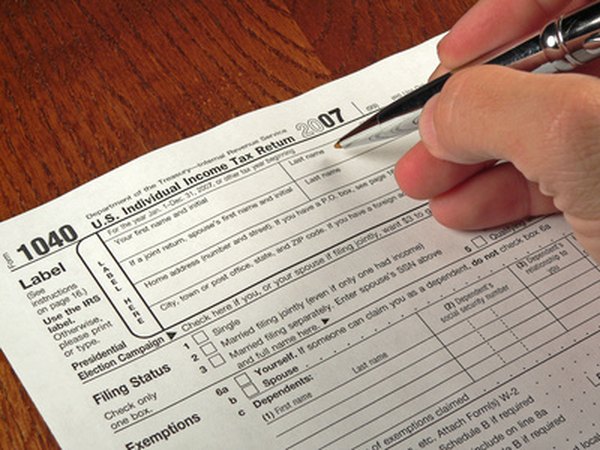Tax Rate vs. Marginal Tax Rate
Your income tax return won't tell you your average tax rate or marginal tax rate.
tax forms image by Chad McDermott from Fotolia.com
It can be confusing to understand the difference between your average tax rate paid on all your income versus your marginal tax rate, which represents what you'd pay on a small increase in income. Neither of them is explicitly printed on your tax return, but you can figure them both out as you do your taxes. Additionally, some online tax software may display these rates.
Tip
A marginal tax rate is the amount of tax you'd pay on the next dollar of income, and it's what people generally refer to when they talk about federal tax brackets. Your overall, or average, tax rate refers to the percentage of your income you spend on taxes.
Finding Your Average Tax Rate
To compute the effective tax rate for an individual or family, also known as the average income tax rate, you want to divide the income total tax you pay by your total taxable income. For example, if you made $100,000 in taxable income and paid $25,000 in taxes, you'd say your average tax rate was 25 percent.
Depending on what you're trying to calculate, you could use only your federal taxes paid, only your state taxes or the sum of the two to compute your average federal tax rate, average state tax rate or total average tax rate. However, the principle is the same.
Finding Your Marginal Tax Rate
On the other hand, you can find your federal marginal tax rate by looking at the federal tax brackets. To find your state marginal tax rate, you'd use the tax brackets for your particular state. Simply look up your taxable income in a table of tax brackets and find which bracket an additional dollar of income would fall into and what the rate is.
For example, if you made $300,000 and income between $200,000 and $500,000 is taxed at 35 percent, an additional dollar would be charged at that rate, so your marginal tax rate is 35 percent.
Capital Gains and Special Cases
When you talk about your marginal income tax rate, that's usually for ordinary income, from salaries, tips and bank interest. Other sources of income may be taxed at a different rate.
For example, long-term capital gains, the amount you gain when you sell holdings like stocks or real estate that you've held for over a year, are taxed at different marginal rates of 0 percent, 15 percent or 20 percent, depending on your total income. Certain income from self-employment is also subject to self-employment tax to cover Medicare and Social Security tax, so it's effectively taxed at a higher marginal rate than income from work for an employer.
2019 Tax Rates
Among other changes under the Tax Cuts and Jobs Act, a new set of federal tax brackets go into effect in the 2019 tax year. For single people, ordinary income is taxed at a 10 percent marginal rate up to $9,700, then a 12 percent rate up to $39,475, then a 22 percent rate up to $84,200, then a 24 percent rate up to $160,725, then a 32 percent rate up to $204,100, then a 35 percent rate up to $510,300 and a 37 percent rate above that. The thresholds are higher for married couples filing jointly, though the marginal rate brackets are the same.
References
- Center on Budget and Policy Priorities: Basics: Marginal and Average Tax Rates
- IRS: About Publication 550, Investment Income and Expenses
- SimpleTax: Average and Marginal Tax Rates
- IRS: Self-Employment Tax (Social Security and Medicare Taxes)
- IRS: Topic No. 409 Capital Gains and Losses
- Tax Foundation: 2019 Tax Brackets
Writer Bio
Steven Melendez is an independent journalist with a background in technology and business. He has written for a variety of business publications including Fast Company, the Wall Street Journal, Innovation Leader and Ad Age. He was awarded the Knight Foundation scholarship to Northwestern University's Medill School of Journalism.

